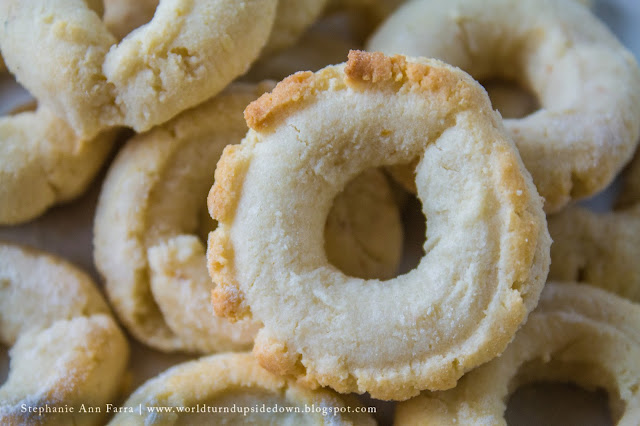I've finally gotten around to making the soap I've been researching for the last few months! Castile soap is one of the most basic soaps out there. It was a common soap in the 18th century and is even still used today.
In the 18th century soap came in two forms: hard soap and soft soap. Hard soap traveled easier around the house but soft soap was cheaper and easier to make at home. Not all soap was home made; soap boilers manufactured soap in bulk and both hard soap and soft soap were available to purchase in stores by the pound. Soap boilers also worked as chandlers as the ingredients and processes were similar.
In colonial times, soap was made by leeching lye out of hardwood ashes. The lye was then mixed with a fatty acid, typically tallow, lard or oil. It was difficult to gauge the strength of lye. Mrs. Child stated in The American Frugal Housewife (1828), that you could test the strength of lye by seeing if the lye was strong enough to float a potato or egg. Some 18th century books recommended buying it from a soap boiler, instead of trying to make it at home.1 The mixture was cooked over a fire and stirred until saponification took place. If hard soap was wanted, salt or unslaked lime was added to the mixture. The mixture was then poured into barrels or molds depending on the type of soap. Soap was then left to cure. Hard soap, like Castile soap benefits from a cure time of over 6 months.
Castile soap is a soap made with olive oil. It was sometimes called "white soap," "olive soap," or "Marseilles soap," the latter name describing the source of a large manufacturer. Colonists used this soap for everything from laundry to luxury toiletries.
Razor maker, Benjamin Kingsbury, thought Castile was the best soap for shaving. "The best soap for the purpose of shaving which I have yet found ... is the Olive-soap, made with olive-oil by a person well acquainted with the process of soap-making, and who, in making it, had in view the vision of a thick and durable lather..."2 Many luxurious toiletries called for Castile soap as a base to hold fragrances.
Castile was also used medicinally. It was seen as safer than other soaps to take internally because olive oil was safe to ingest. One anecdote from a physician relates the treatment of a patient who suffered from "corpulence" and gout.
Soap was also listed as an ingredient to make chocolate frothy and soap and chocolate was seen as a cure for rheumatic pains.4 Yikes!
He began to take it July, 1754, at which time he weighed 20 stone and 11 pound...He took every night at bed-time, a quarter of an ounce of common home-made Castile Soap, dissolved in a quarter of a pint of soft water. In about two months time, he began to feel more freedom...his bulk was reduced two whole stone weight...3
I originally started looking into soap making because I read about the harms of antibacterial soap, many of which are now banned by the F.D.A. for causing problems with the brain, hormones, immune systems and reproductive systems. On top of the health risk they also cause an environmental risk. After the soap goes down the drain, the antibacterials continue to kill, killing many healthy necessary bacteria and algae in our waterways. I was looking for a healthier alternative to use and ended up where I always do: Looking at what our foremothers were doing and found a perfect replacement. I didn't want to make this post a tutorial because soap making is dangerous and one post is not enough to teach the process but I will be making a post on how to make 18th century luxury wash balls using pre-made Castile which can be bought almost anywhere, so stay tuned for that!
-------
1 Hill, John. A history of the materia medica. Containing descriptions of all the substances used in medicine ; ... By John Hill .. London: Printed for T. Longman, C. Hitch and L. Hawes, 1751
2 .Kingsbury, Benjamin. A treatise on razors: in which the weight, shape, and temper of a razor, the
means of keeping it in order, and the manner of using it, are particularly considered ... Vol. 9. London: Sold by the author, 1810.
4 Leake, John. Medical instructions towards the prevention, and cure of chronic or slow diseases peculiar to women: especially, those proceeding from over-delicacy of habit called nervous or hysterical... London: Printed for R. Baldwin, 1777.






















